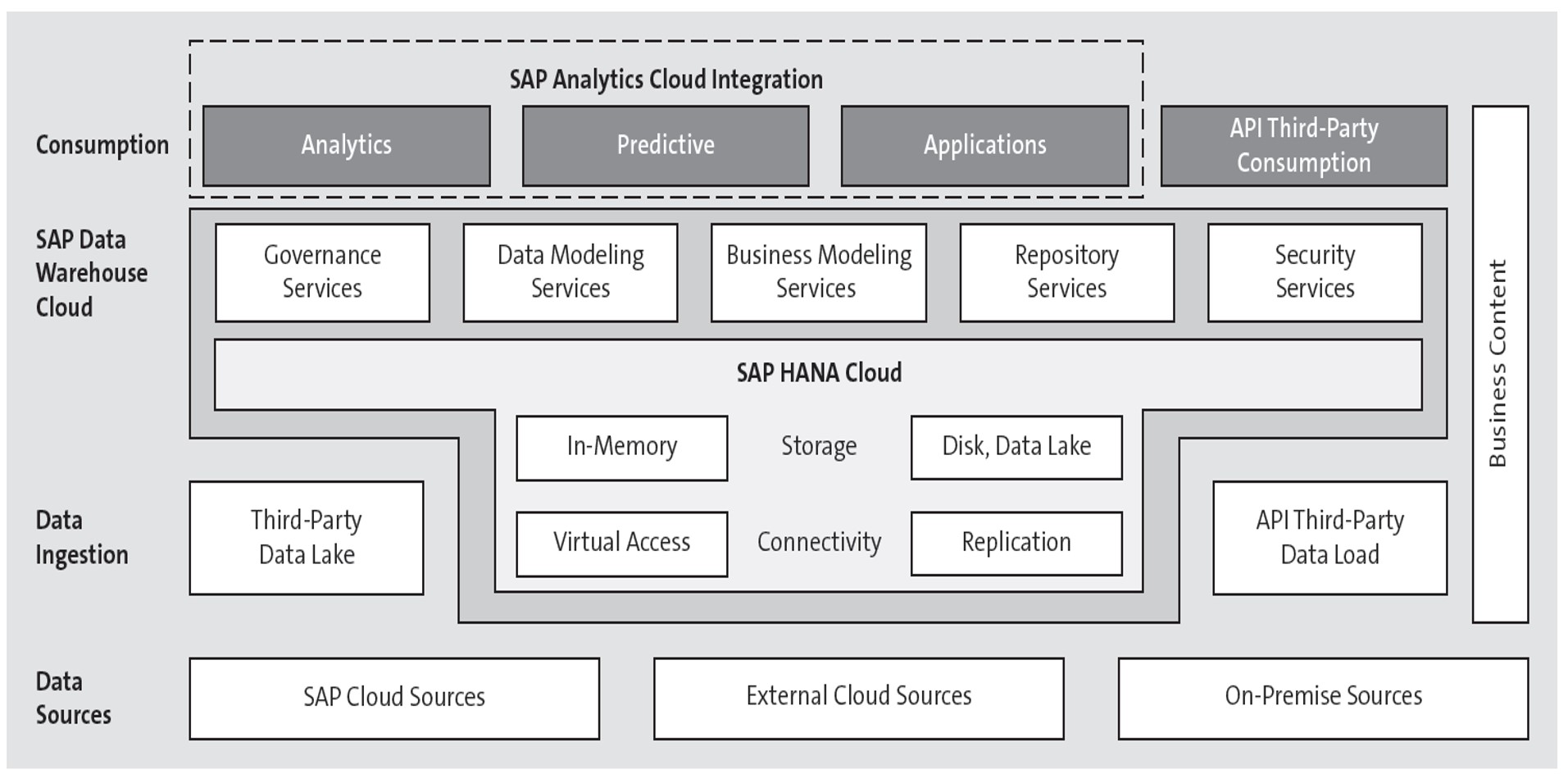It was just a matter of time until SAP’s SaaS Cloud strategy led to the introduction of an enterprise data warehouse (EDW) solution: SAP Datasphere (previously SAP Data Warehouse Cloud).
SAP Datasphere works well with SaaS types of source systems as you can have the installation in the same technical environment. This allows for the best possible transmission of data from the source to the EDW and thus has an advantage in the upload from a cloud-based solution to a local warehouse.
What is fundamentally different with SAP Datasphere is the fact that it doesn’t follow the principle of the ideal type of data warehouse by the book. In contrast, it follows the principles of the needs of the consumers, and it starts small and simple (though this doesn’t mean that a complex data warehouse solution can’t be established). Complexity can easily lead to a risk of massive performance implications that the end user can’t see. With this, the solution itself can be thought of as having two main themes:
- The semantic layer is for easy, self-service-type handling of data sources, connections, and transformations. The data warehouse layer is the foundation of all data to be collected and harmonized. This latter layer, which SAP call the data layer concerns building views to serve as primary source for the semantic layer.
- The architecture of the solution itself shows that the approach is, similar to SAP BW/4HANA, an application type of setup. But the possibility to leverage SQL skills makes it particularly interesting for those companies that have been using SQL-based solutions for their EDWs. The figure below shows all the components of the solution and the solutions it can integrate with.

The usability advantages can be found in simple graphical modeling of data structures; the ease of adding data sets on local drives or any data source, be they data lakes or simple flat files in the replication options of the semantic layer, is supported by prebuilt adaptors. SAP speaks of a business builder, which reflects this approach very well. By the way, when we talk about data lakes, we also include SAP HANA data lakes, which can be enabled via Open SQL schemas.
The accessibility of these functions directly from within the interface of an SAP Analytics Cloud solution underlines the concept of targeting consumers in business departments. It supports a top-down approach to create a data warehouse, allowing for an organizational layer with a subset of the modeled objects and thus allowing for enterprise- wide collaboration, using the so-called space concept. In a way, there is an analogy with Universes. Although the business content for this solution is not as rich as that for SAP BW/4HANA, it exists and will be enhanced over time.
One remarkable asset of the new development is the approach to and realization of a full integration with underlying data models of SAP BW/4HANA or SAP S/4HANA. The situation now in SAP Datasphere is a quantum leap ahead in the flexible connection to SAP-originated systems and the avoidance of double maintenance of data models (replicating domain models). An interesting fact is the reuse of SAP Data Intelligence capabilities for the data upload capabilities.
Sure, there is still a lot to be built to complete the approach and to overcome performance gaps due to missing functionality, but the concepts and the investments are real and the projects are running. These are all reasons to be excited!
For those companies or organizations that have opted for a SaaS type of ERP system with SAP S/4HANA Cloud, essentials edition, it’s very likely that the SaaS-based SAP Datasphere is the first EDW to consider. The data is in the same environment, the cloud strategy is supported, and the majority of use cases are either not complex or primarily small in nature. So why not start with this end-user-oriented approach?
In general, when companies running SAP S/4HANA are new to data warehousing or are using an ERP system from SAP for the first time, it’s a good idea to also recommend looking into SAP Datasphere. The top-down approach to conquering the data warehouse task is a big reason for this recommendation.
Editor's note: Until March 2023, the SAP Datasphere solution was known as SAP Data Warehouse Cloud.
Editor’s note 2: This post has been adapted from a section of the book SAP S/4HANA Embedded Analytics: The Comprehensive Guide by Jürgen Butsmann, Thomas Fleckenstein, and Anirban Kundu. Any reference to SAP Datasphere in this book will be under the old product name, SAP Data Warehouse Cloud.



Comments